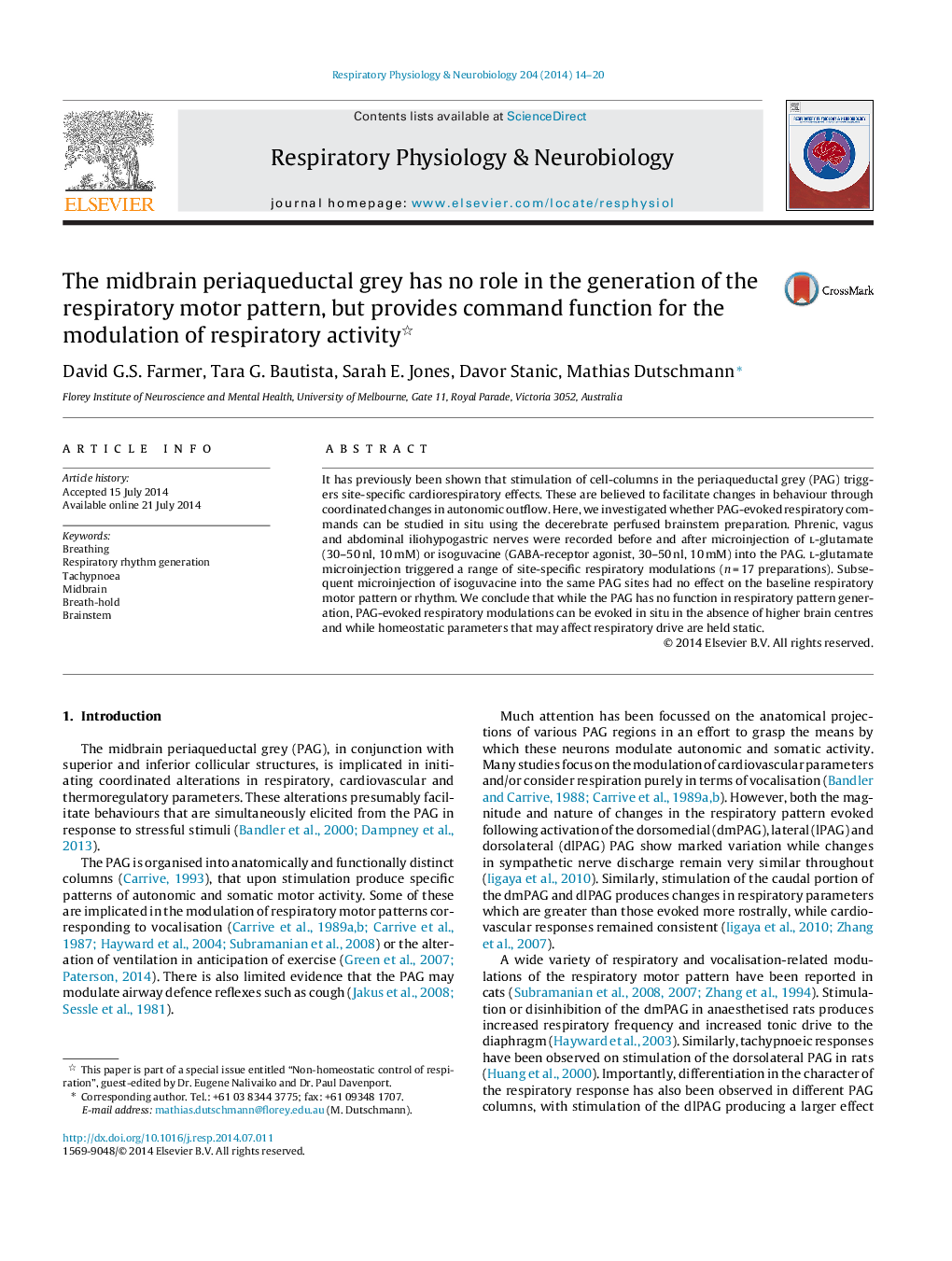| Article ID | Journal | Published Year | Pages | File Type |
|---|---|---|---|---|
| 2846946 | Respiratory Physiology & Neurobiology | 2014 | 7 Pages |
•Strong respiratory modulation can be triggered from in situ PAG.•Inhibition of the PAG has no effect on the eupnoeic respiratory motor pattern.•The perfused brainstem preparation is model to study PAG mediated cardio-respiratory commands.
It has previously been shown that stimulation of cell-columns in the periaqueductal grey (PAG) triggers site-specific cardiorespiratory effects. These are believed to facilitate changes in behaviour through coordinated changes in autonomic outflow. Here, we investigated whether PAG-evoked respiratory commands can be studied in situ using the decerebrate perfused brainstem preparation. Phrenic, vagus and abdominal iliohypogastric nerves were recorded before and after microinjection of l-glutamate (30–50 nl, 10 mM) or isoguvacine (GABA-receptor agonist, 30–50 nl, 10 mM) into the PAG. l-glutamate microinjection triggered a range of site-specific respiratory modulations (n = 17 preparations). Subsequent microinjection of isoguvacine into the same PAG sites had no effect on the baseline respiratory motor pattern or rhythm. We conclude that while the PAG has no function in respiratory pattern generation, PAG-evoked respiratory modulations can be evoked in situ in the absence of higher brain centres and while homeostatic parameters that may affect respiratory drive are held static.
